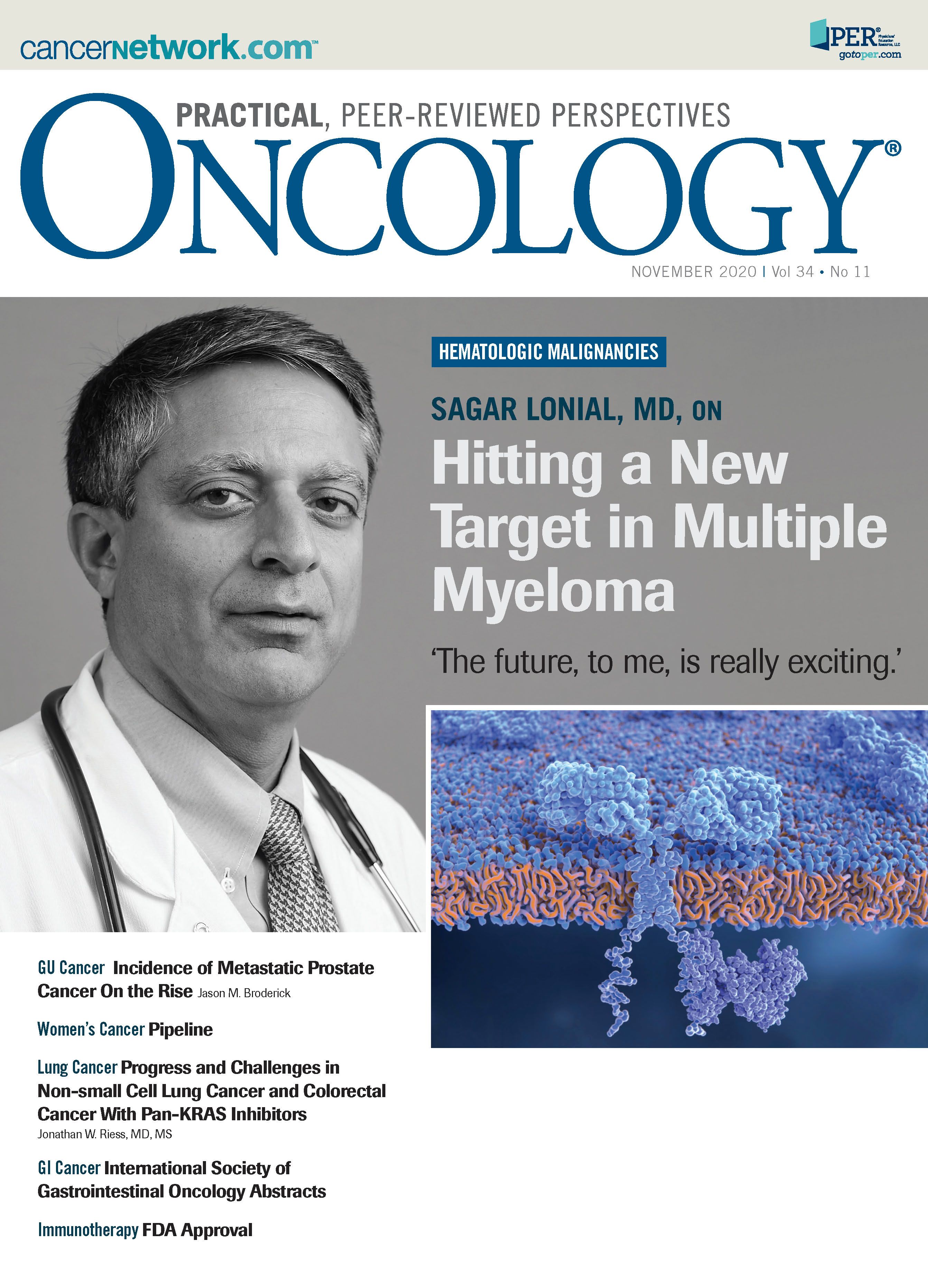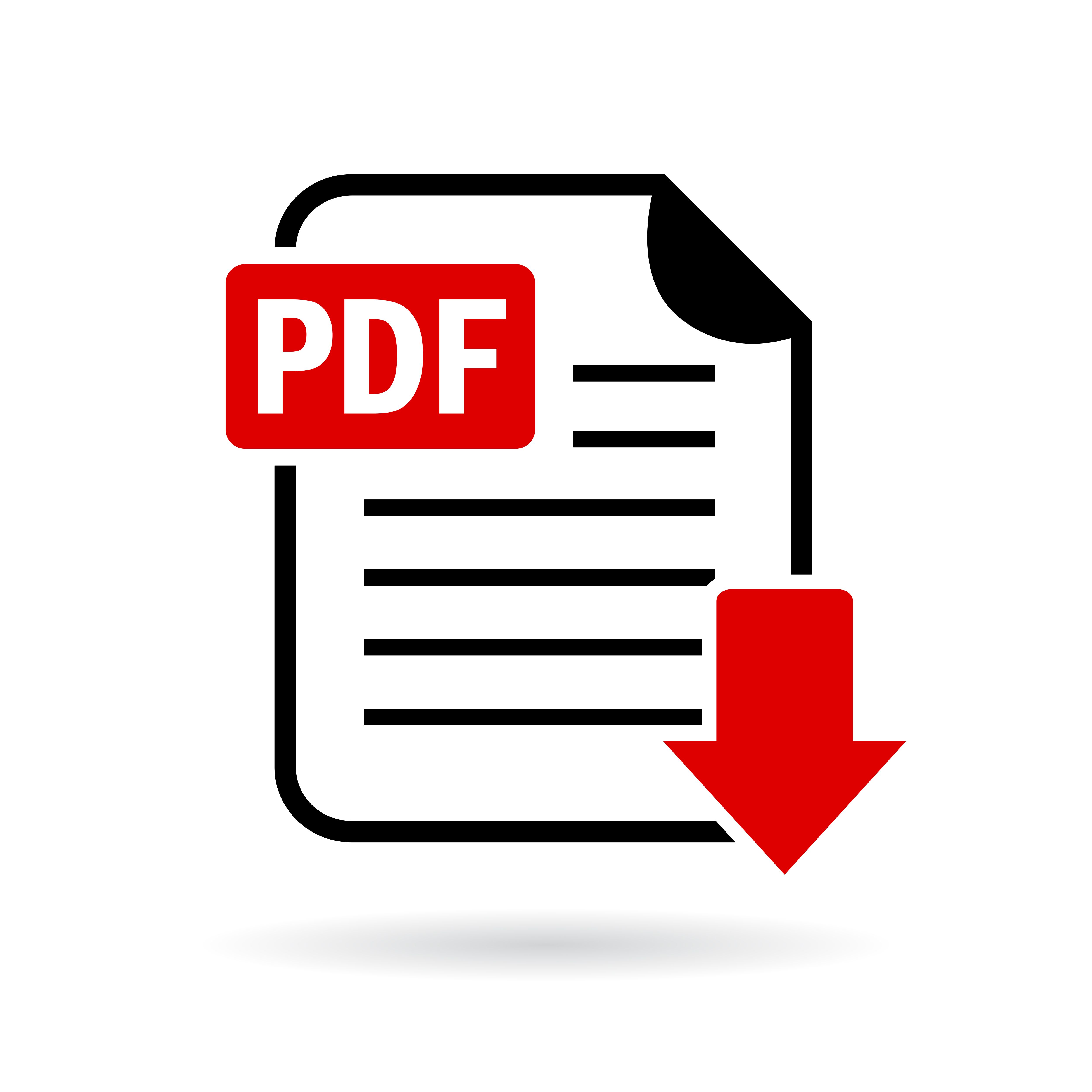Hitting a New Target in Multiple Myeloma
ONCOLOGY® sat down with Sagar Lonial, MD, professor and chair of the Department of Hematology and Medical Oncology at the Emory University School of Medicine and chief medical officer at Emory’s Winship Cancer Institute, to discuss the FDA approval of the antibody-drug conjugate belantamab mafodotin (Blenrep), along with other BCMA-targeting agents for patients with multiple myeloma.
Lonial is chair of the Department of Hematology and Medical Oncology at the Emory University School of Medicine and Chief Medical Officer at Winship Cancer Institute at Emory University.

The development of novel therapies including proteasome inhibitors, monoclonal antibodies, and immunomodulatory drugs have significantly improved the prognosis and survival of patients with multiple myeloma. Despite the improved outcomes, the high rate of treatment resistance and relapsed disease indicates a need for continuing therapeutic innovation.
The emergence of B-cell maturation antigen (BCMA)-targeting agents has given this patient population new hope, demonstrating promising and exciting clinical results in ongoing trials.
ONCOLOGY® sat down with Sagar Lonial, MD, professor and chair of the Department of Hematology and Medical Oncology at the Emory University School of Medicine and chief medical officer at Emory’s Winship Cancer Institute, to discuss the FDA approval of the antibody-drug conjugate belantamab mafodotin (Blenrep), along with other BCMA-targeting agents for patients with multiple myeloma.
Q: What are the current strategies for targeting BCMA in multiple myeloma, and what advantages do they hold over conventional treatment?
Lonial: There are, right now, 3 different ways to get to BCMA. You can use the antibody-drug conjugate monomethyl auristatin F, you can do a bispecific, or what’s also known as a T-cell engager, or you can use chimeric antigen receptor (CAR) T-cell therapy.
The first approved drug to target BCMA, belantamab mafodotin, included patients with a median of 6 to 7 prior lines of therapy. For patients who do respond, the duration of response (DOR) is 11 months. I think that’s an important number to put in perspective because for every drug that has a 30% response rate, the median progression-free survival, or PFS, is about 3 months. No matter what drug you look at in that refractory myeloma setting, 30% equals 3 months. But the DOR [for belantamab mafodotin] really speaks to the tolerance of that treatment and the ability for responders to stay on treatment. That’s why I think it’s such an important step forward. The ocular toxicity is somewhat unique for myeloma drugs. It is more of an examination finding by an ophthalmologist or an optometrist; it does not always result in significant symptoms. And in fact, only 18% to 20% of the time it results in a change in visual acuity. I think the take-home message is that it is a really good option. It’s our go-to option for triple-class refractory myeloma. Partnering with an eye care professional is part of the process, and it’s just something we should all get used to doing to figure out how to maximize the benefit from [belantamab mafodotin].
If you go to the T-cell engagers, I think this is a concept that we’ve seen with blinatumomab (Blincyto) in acute lymphoblastic leukemia (ALL) and now lymphoma, where you’re basically targeting the tumor, and you’re targeting a T cell and bringing them in close proximity. I will tell you personally, I was skeptical that this approach would work in myeloma because I thought that T cells would be exhausted, and I wasn’t sure you’d be able to get them to work. But certainly, at the higher doses in the phase 1 trials for both teclistamab and the BMS (Bristol Myers Squibb) product, it appears that you’re getting responses over 65% to 70%. What we need to see is the durability of those responses, and what the mechanisms of failure are for this. Is it inducing ultimately T-cell exhaustion? Or are there new mechanisms of resistance that we just don’t know? But this is another way to go after BCMA.
The third is CAR T cells. CAR T cells I think everybody’s familiar with in terms of ALL and diffuse large B-cell lymphoma. The only difference is BCMA is the target. What we see [with CAR T-cell therapy] is a very high overall response rate. And interestingly, the incidence of significant cytokine release syndrome or neurologic toxicity is much lower in BCMA-targeted CAR T cells than we’ve seen with CD19. We don’t know if that’s a function of BCMA or if it is a function of myeloma, but it seems like it’s actually somewhat better tolerated overall. And at least from what we know that was presented by [Nikhil C.] Munshi, [MD,] the median progression-free survival is about 11 months as well. So, there are very active, very deep responses that last roughly 11 to 12 months on average.
I think the advantage that BCMA has over, for instance, CD38 or even SLAMF7, is that the target is expressed much more exclusively on plasma cells. So, the off-target impact is going to be less. And it gives us a second or third antibody target to go after that is really important. BCMA is a great target, its ligand is 1 of the reasons why myeloma cells become resistant. So, blocking BCMA, through any of these approaches, actually not only targets the tumor cell, but it also may help to overcome drug resistance. And those are really exciting opportunities.
Q: When it comes to belantamab mafodotin, what is the patient population that’s best suited for this drug?
Lonial: The FDA approval is for patients who are triple-class refractory, so resistant to proteasome inhibitors, immunomodulatory agents, and anti-CD38 antibodies. For me, it would end up being a patient who’s had 3 prior lines of therapy, and is still in a reasonable performance status to get any treatment at all.
Q: Can you talk a little more about the associated ocular toxicity?
Lonial: Unfortunately, you can’t treat the ocular toxicity per se. The best way to treat it is to hold the drug and let the toxicity [ease]. What I think is important and different from many other drugs, though, is that the half-life of belantamab mafodotin is long enough that, even if you have to hold a dose or 2 for 3 weeks, or oftentimes 6 weeks, most patients still maintain or improve their response. It’s not like if you don’t stay on schedule you’re going to be in trouble. I think that’s an important lesson we learned from the phase 2 DREAMM-2 study.
Q: What do you see as the next steps with belantamab mafodotin, or with any of the other BCMA-targeting therapies? Is it possible that they could move earlier in the treatment timeline?
Lonial: I think the question is going to be, how do you partner them with other drugs? How does [belantamab mafodotin] fit in? And those trials are being done now, combining it with pomalidomide (Pomalyst), with bortezomib (Velcade), with lenalidomide (Revlimid). Then, another question coming up is, how do you sequence those drugs? If a patient has been treated with one, can they respond to another? That’s a question we’ve not been able to answer because most of the trials have excluded prior exposure to BCMA [therapy]. But now they’re all including cohorts of prior BCMA therapy. I think we’ll get an answer to that question in the next year.
Q: Is there any trial specifically in this area that you’re looking forward to hearing about or that will really inform these issues?
Lonial: What I’m most curious about with the T-cell engagers is longer follow-up to understand how long do these responses last? Because I think our hope with the CAR T cells was that perhaps the median duration of response might be longer than we’ve seen, but it’s a one-and-done therapy. Once you’re done with a CAR T-cell therapy you’re not on any other therapies, which patients love. But with the T-cell engager giving a continuous therapy over time, maybe the response will last longer. We don’t know the answer to that, and that’s the big question we have to answer.
Q: What about multiple myeloma in the newly diagnosed setting? Where is the field headed when it comes to that group of patients?
Lonial: I think in the newly diagnosed setting, we will likely move to quadruplet regimens. The question is going to be, how long do we continue treatment with all 4 drugs? At least at our center, we’ve adopted RVd (lenalidomide, bortezomib, and dexamethasone) plus daratumumab (Darzalex), as a standard induction regimen for standard-risk patients. But we only give it for 4 cycles, collect stem cells, and take them to transplant, and then we go to risk adaptive maintenance afterward. I think the idea of continuing 4 drugs forever is not a very patient friendly approach, nor is it a very cost-effective approach. But the question is, can you use these drugs for short bursts of time to try to get where you want to get, and then come to something a little less intense on the back end?
Q: It seems like we’re in a period of real innovation here in the multiple myeloma space. Would you agree with that? How would you characterize where the field is right now?
Lonial: We have periods where a lot [of innovation] happens. The last time was probably 2016, when we had both elotuzumab (Empliciti) and daratumumab approved in the same 60-day period. We’re seeing BCMA-targeted therapies come to the forefront of therapy and moving them into earlier lines of therapy, and figuring out how to do things like minimal residual disease (MRD)-driven therapy. If somebody is MRD-positive, is that where you treat with a BCMA-directed therapy early to try to eliminate that? I think those are exciting questions we’re going to be able to answer.
Q: Do you see a common clinical development theme across all hematologic malignancies, like some trend that’s coming to the forefront no matter which cancer type you’re talking about?
Lonial: There are 2 developing trends that I think are important. While I think many of us in the field would argue that immunotherapy was first invented in hematologic malignancies, with allogeneic transplant for instance, we have learned to refine that a little, particularly by using cellular therapies such as CAR T cells and other ways to augment cellular therapy in all hematological malignancies. I think the second trend is taking the explosion of precision medicine in solid tumor oncology and beginning to apply some of those lessons to hematological malignancies as well. We know that in acute leukemia, for instance, we’re beginning to look at certain mutations and treat them differently. We know that in myeloma, we’re starting to test precision medicine-based approaches as well. We’re also using genetics and genomics to identify lymphoma subsets. That’s getting us into both an immune era and a precision medicine era. And as I said at SOHO [the Society of Hematology Oncology annual meeting], the challenge now for us is marrying the 2 concepts. How do you take both precision medicine and immune therapy and make it a 1-treatment approach for a patient?
Q: You’re a co-chair of the 25th Annual International Congress on Hematologic Malignancies®, which is devoting a full afternoon session to advances in CAR T-cell therapy. What can we expect from that session?
Lonial: What you will see there is the current state of the art as well as the future state of the art. The current state of the art is really important, because while CAR T-cell therapies are not given in the community oncology practice, knowing when to refer from the community practice for a CAR T-cell treatment, and what that treatment can offer patients, is critically important. That’s why it’s important to know where we are today. The future, to me, is really exciting, because I think it suggests we can take diseases that are treatable and potentially cure a larger fraction of them.
Q: Do you see CAR T-cell therapy becoming more accessible to the community practice over time?
Lonial: A lot of that depends on the regulations that go along with administering treatment. Right now, you have to be FACT (Foundation for the Accreditation of Cellular Therapy)-accredited to get CAR T cells, which means [that treatment locations] are going to be limited to transplant centers. There probably are going to be opportunities for large community practices at some point to [become accredited] and be able to [administer treatment]. But at least for now, I think that it’s not quite ready for prime time. The advantage [of CAR T-cell therapy] from my perspective is it is a one-and-done therapy. And if that one-and-done really is done, then it’s a true victory. I think that opportunity for patients is one that we don’t want to limit just to people who are seen in academic centers.
Financial Disclosure: The authors have no significant financial interest in or other relationship with the manufacturer of any product or provider of any service mentioned in this article.

Newsletter
Stay up to date on recent advances in the multidisciplinary approach to cancer.
